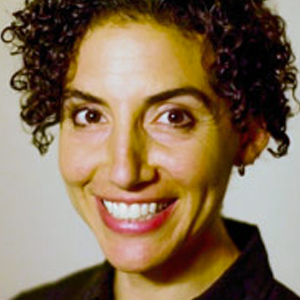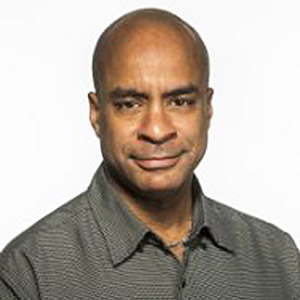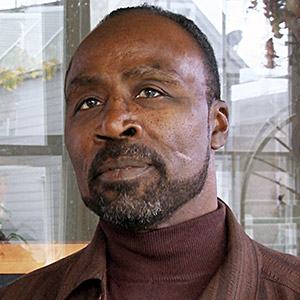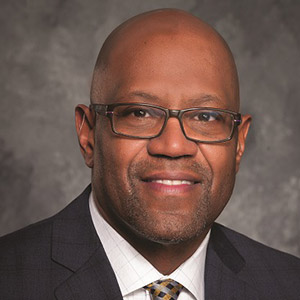

When Bennie Lee was only 13 years old he became a leader of the Apache Vice Lords, a black street gang on Chicago’s West Side. In and out of prison for years, Lee eventually landed on death row in the aftermath of a deadly riot at the Pontiac Correctional Center in Illinois. Lee was acquitted, set himself straight, and is now helping the formerly incarcerated imagine a life on the outside.
Download episode
Rebecca Sheir has been a host and reporter on All Things Considered, Morning Edition, Marketplace, Here and Now, The Splendid Table, and the Alaska Public Radio Network. Follow her on Twitter.

John Owens is a writer and producer for Through the Decades, a daily one-hour program on the Decades Network. He is based in the Greater Chicago area.

Bennie Lee is a former Chicago gang leader and death row inmate. He now mentors the formerly incarcerated and works to reduce recidivism rates.

Victor Dickson is president and CEO of Safer Foundation, a leader in the fields of community corrections, prisoner re-entry, and workforce development.
Rebecca Sheir: In the 1970s, Chicago was a rough place to say the least. In the year 1974 alone, the city racked up a whopping 970 murders. At the time, that meant 30.6 murders for every 100,000 residents.
Someone who came out of that rough world of 1970s Chicago is Bennie Lee. In his youth, Benny was a gang “chief” with the Apache Vice Lords on the city’s West Side. Mostly that meant running drugs and stealing things.
One day in 1975, Bennie and his crew had a new idea: to steal the same goods twice. They’d already swiped some CB radios from a store—remember CB radios?—and sold them to a fence (that’s someone who resells stuff and gives gang members a cut). And Bennie decided he was going to rob the CBs back from the fence.
Bennie Lee: And so when he opened the door we just bumrushed it and went in the house. While we was in there, you know we lookin’ for money and all this stuff, then a friend of mine that was with me, he said, “Hey the police is outside.” They pulled me out and they beat us. I had a permanent hairdo. They beat the perm out my hair. You know, I had about 27 stitches.
Sheir: Bennie Lee was arrested, charged, and convicted of armed robbery, burglary, and unlawful use of a weapon. The whole thing would spark a chain of events that eventually put him on Illinois’ death row. And if you talk with Bennie today, he’ll tell you he had no idea how his attempted robbery would change his life forever.
I’m Rebecca Sheir, and from Slate magazine, this is Placemakers: stories about the spaces we inhabit and the people who shape them.
If you fast-forward 40 years from the 1970s Chicago of Bennie Lee’s youth, you’ll see that the city’s murder rate has gone down; it started abating in the 1990s. But Chicago still has one of the highest homicide rates in the United States. Last year, in 2015, 488 people were murdered there. And as for this year, at the time of this podcast, Chicago’s homicides have already topped 500.
Newscaster 1: The Chicago police department’s latest numbers reveal a bleak start to 2016. Last month was the deadliest January the city has seen in more than 16 years. There were 51 murders, a 75 percent jump from the year before.
Newscaster 2: It is a sad milestone. More than 500 killed. That’s the gruesome milestone Chicago residents are waking up to this morning.
Newscaster 3: 2016 has been the deadliest year for the city of Chicago in two decades.
Sheir: Chicago sees thousands of arrests and convictions each year. It also sees thousands of people released from prison after doing their time.
But close to half of these ex-convicts are back behind bars within three years of their initial release. And this revolving door of prison time and crime is a huge problem for communities trying to wrench themselves out of poverty.
Bennie Lee though? He’s not daunted by the statistics. He’s an ex-convict who beat the rap, and in the process discovered what he thinks is the answer to his hometown’s high recidivism rate. And as producer John Owens tells us, Bennie’s is one of the few approaches that seems to be working.
Lee: All right, let’s make room so they can get in the circle.
John Owens: This is Bennie Lee now. He’s a trim, bearded African American man in a storefront room in the Austin neighborhood of Chicago’s far West Side. Lee grew up here when this was a mostly white neighborhood. These days, it’s almost entirely black and low income. And it has some of the highest rates of crime in the city.
Male voice: We strive for unity in our families, community, and nation.
Owens: Lee’s a drug counselor, but on Saturdays he leads what he calls re-entry circles for the formerly incarcerated. About 20 men and women show up this morning. They’re all struggling with similar issues now: trying to find someone who will hire them. Or rent to them. Everyone understands here how hard it is.
Male voice: I do two temp jobs a week. And uh, I begin like I say to put a little something in the bank, put a few dollars in my pocket. My confidence is up a little bit.
Owens: But more than anything, the people here want to hear from Lee. He gives them concrete advice about how to navigate the world they’re reentering at a big disadvantage.
Lee: You gotta be ready to respond to the moment. Cause see, in order for them to do a drug test on you, you’ve got to sign a consent, consenting that it is OK for them to do that.
Owens: Lee is a dynamic, experienced speaker. In his other life, he’s an educator, teaching criminal justice classes at Northeastern Illinois University and Chicago State University. He has his bachelor’s and master’s degrees in education. But his authority here comes from his time on the inside. Lee has been held behind the locked doors of nearly every corner of the state’s huge criminal justice system. He knows how and why the people here might end up back there, despite all their best intentions.
Owens: If you ask Bennie Lee what started him on his path to prison, he won’t start with the armed robbery that led to his longest conviction. He starts at Austin High School in the 1960s. His class was among the first to be integrated. And it didn’t go well.
Lee: One day, a race riot broke out. Four white guys tried to come in the classroom on me. And my father, he had taught us how to box at the time and I was boxing, defending myself and three of my buddies happened to notice and they joined in. And so as a result, we all got suspended, me and my buddies. Nothing happened to the whites because they felt we was in their school, in their neighborhood. We were the troublemakers.
Owens: Lee says he was fingered as the leader and he wound up in juvenile court.
Lee: And my parents didn’t realize that they were sending me to the Illinois State Training School for Boys in IYC St. Charles. And I can remember my mother crying in the courtroom, my father feeling hopeless, ’cause they didn’t know what was going on, ignorant to the procedures. And they didn’t like fight for me. So I felt like my parents had abandoned me, they gave me away.
Owens: Lee says he’d already been recruited by the Apache Vice Lords before being sent away. But now he became more actively involved in the group’s criminal activities. From 1968 to 1975, he was in and out of prison for various petty crimes. Then after being charged with the armed robbery of the CB radios, he ended up at the Pontiac Correctional Center. Three years later, the prison had a major riot.
Lee: Then all of a sudden somebody said, “It’s going down!” Right, they hollerin’ all, you can hear ’em from outside from inside. And they yelled, “Don’t let ’em close that door.” Next thing I know, I got pushed with the rush that opened up the cell house door and we got in. After the commotion was over, I noticed there was a shank straight through my arm.
Owens: It wound up being one of the worst prison riots in Illinois history. Three correctional officers died. And just as at his high school years before, Bennie Lee found himself accused of organizing the violence. He was, after all, still a member of the Vice Lords, and a high-ranking one at that.
Lee and the others awaited their trial on death row.
Owens: But the case of the “Pontiac 17,” as they were called, became a national cause. Advocates said that the men were falsely accused and would never receive a fair trial. Civil rights activist Dick Gregory held fundraisers for their legal defense, and Nation of Islam leader Louis Farrakhan visited them.
A trial for 10 of the 17 defendants started in September 1980. But the judge found much of the prosecution’s witnesses questionable. Finally, the charges were thrown out and Lee and the others were acquitted in May 1981. Lee was released soon after. He was 27 years old, had never worked a regular job or even got a driver’s license. He soon violated his parole and wound up doing another short stint behind bars. That time would be the last, Lee decided. He had just read The Autobiography of Malcolm X, and he says that helped him put his own life in perspective. More importantly, he found a support network on the outside, many of them among the Pontiac 17.
Lee: I didn't think nobody’d hire me. But my peers encouraged me, “Go for it,” helped me. My biggest battle was the image I had of myself. You know the messages, because I’m feelin’ like I’m out here with a shirt and tie on, with a resume up under my arm. I feel like I’m easy prey now. Guys look at me like I’m easy prey, I’m lame. You know, so I’m like I don’t need this here. But where could I go, back to hustling?
Sheir: Time for a quick break. When we come back, we’ll find out how Bennie Lee took what he learned from re-entry and started applying it to the world around him.
But we’ll also hear why you can gain all sorts of skills in prison—useful, practical skills like being a barber, say—but good luck getting a license when you get out.
Sheir: From Slate magazine, it’s Placemakers. I’m Rebecca Sheir.
Today we’re talking about recidivism and one man’s struggle to escape the revolving door of crime and prison time.
Bennie Lee’s time behind bars was nothing short of dramatic. He was accused of inciting a riot in which three guards died, and then he faced possible execution, spending three years on death row. Compared with all that, the challenges of life on the outside might not seem as extreme. But Bennie says for inmates making the transition back to society, it’s all deeply connected.
Lee: And I just believe it that if you really want to look at what cause people to be under a strain that lead back to recidivism or to learn how people can work through the barriers that formerly incarcerated and convicted people face upon discharge, you need to have some people that has actually experienced that to share their experiences and give their insights on what they had to deal with, some of the barriers they faced, how did they overcome those barriers.
Sheir: How did Bennie Lee make his own transition? John Owens picks up our story in Chicago.
Ike Taylor: Hello everybody, my name is Ike Taylor and I am and will always be one of the Pontiac brothers.
Owens: This is an annual meeting of the so-called Pontiac 10, the 10 inmates who faced charges together. One of their members, Jesse Hill, died earlier in 2016, so this time they’re gathering at a church on Chicago’s South Side.
One of the speakers is Rev. Mary Lucas, who ministered to the Pontiac 10 while they were in prison and kept up with them after they were acquitted.
Mary Lucas: They really came to love each other, as heads of all the existing gangs. And there was a oneness that developed and changed those men.
Owens: The Pontiac 10 became Bennie Lee’s own re-entry circle. They helped each other adjust to life on the outside and see the connections with life behind bars.
Lee: We were fighting for better conditions in those prison systems. The same conditions we were faced with in our communities that set it up for us to end up in prison, we ran face to face with those same conditions in the prison system.
Owens: When Lee got out of prison for the last time in 1984, he was a 30-year-old basically starting his life like a teenager. He had never finished high school, so he had to get his GED. He also had to break a debilitating heroin habit. He plunged himself into drug counseling and met others going through the same thing.
Owens: The Gateway Foundation helped Lee get training to become a counselor himself. In Evanston, where he wound up working, he found he could really connect with the clients who, like him, had served time. Overall, though, few seem to care about them.
Howard Saffold: We, you know, we’re kind of stuck on stupid here with that population. And unfortunately many of them are living almost on a day-to-day survival mode.
Owens: That’s Howard Saffold, a veteran community activist and retired police officer in Chicago. He launched a number of organizations to address recidivism. They all died due to a lack of funding.
Owens: The funding issue is a real one. But Bennie Lee says he couldn’t wait for the system to figure itself out. He’d gotten certified as a substance-abuse counselor, and he decided to expand his practice informally to ex-inmates. He hit up local churches to donate chairs and space.
Lee: The re-entry circle is like a support circle for formerly incarcerated and convicted people and even their families to come and talk about some of the issues they’re struggling with, some of the barriers they’re faced with upon discharge and trying to seek employment or housing or some type of assistance. We look at a strategy of how to take action, so a person can meet their goals.
Re-entry circle: With your hand in my hand, together we can make it.
Owens: This is the group recitation which closes Bennie Lee’s Saturday morning re-entry circle meeting, held in his offices in Chicago’s Austin neighborhood.
It’s a mantra which symbolizes the support network within the group. I’ve sat in on a lot of these circles, and I’m always struck by the stories the ex-offenders tell and the connections they make.
Ernest Roberts: The mentor meeting is so important. Because when we comin’ home from in prison, we go through a lot of issues where people don’t know nothing about. And by me having a support network—a group of guys I can come relate to about the barriers and a lot of stuff I was facing, just from me having an X on my back—I was able to get around it. Because these guys that was mentoring me, they was giving me some tough love, saying, “Man you’ve got to hang in there, man you got to stay the course.”
Owens: That’s Ernest Roberts, a burly, 54-year-old man who says he was in prison 11 different times. Now he assists Bennie Lee in these meetings.
Owens: I met a guy whose street name is “Boonie Mack.” His real name is Clifton McFowler. He did almost 28 years in prison for first-degree murder. And he’s another former Vice Lord, someone who knew Bennie back in his criminal days. McFowler’s now another regular in the re-entry circles, and he’s also a patient mentor for people who need a lot of basic assistance.
Boonie Mack: I never had a driver’s license. I never had a state identification card. I never had a social security card, none of that. It’s just minor things to everybody else, but to a criminal or ex-offender, those things are essential. So now I’ve got that, these are my first steps in becoming a productive citizen.
Owens: The ex-inmates talk about facing discrimination in job interviews, enduring endless background checks, and more. But through it all, Bennie Lee is here for them. And his re-entry circle model, based on little more than donated space and some fliers, is spreading around Chicago and beyond.
Sheir: Of course, recidivism doesn’t just affect Chicago or other large urban areas. It’s a national issue.
The Bureau of Justice Studies recently tracked roughly 400,000 ex-prisoners released in 30 states. And the results show that within six months of their release, more than 30 percent of these individuals were back in prison. That number rose to nearly 6 percent by the end of their first year out. And after five years? Almost 80 percent of them were behind bars again.
Victor Dickson is someone who knows how much attention we should be paying to the issue of recidivism—even if, well, we’re not. He runs the Safer Foundation in Chicago. And, as he told me when I interviewed him recently, he knows Bennie Lee’s work well.
Victor Dickson: I think that Bennie, his program is very beneficial and it’s very necessary. Having kind of a support group of individuals coming out is extremely important. But beyond that they still have to get access to the very hard and tangible resources that they need.
So coming out of that group they still need substance treatment, they still need housing support, training and job placement services, all of the kind of things that are really critical for them to really get their life back on track.
Sheir: So it sounds like his group lays kind of an emotional foundation, it helps people get maybe their confidence back, their self-concept, their identity.
Dickson: Yeah, that’s really critical. A cousin of mine just recently was released from prison after 20 years and he happens to now be a Safer Foundation client. He was just telling me the other day that he finally got his driver’s license and went driving for the first time and it just freaked him out. There’s a lot more traffic, things are a whole lot different than they used to be. And so those kind of emotional supports are very important to help people adjust, but beyond the emotional support, again they need a place to go where they can get the tangible resources. There’s so many different barriers.
Sheir: What are some of the biggest?
Dickson: Well, the biggest barrier is employment. I mean if we think about the fact that if a person, because of their record, is precluded from gainful employment, then what is the alternative? I mean, any of us can ask ourselves if we weren’t able to earn a living in a legal way then what alternative do we have? We essentially drive people to do things that really put them right back into the justice system, and that's the cycle that we have to find a way to break.
Sheir: So you’re talking with us right now from your office in Chicago. In terms of ex-offenders in that city, are there any particular barriers we see in the city?
Dickson: Well, the city of Chicago is probably not a lot different than other cities. When people are released from prison, for example, they usually have maybe $20, you know, and that’s about it, a bus pass or a train pass to get back home. They may have their clothes that they were issued upon release from prison, and that’s it.
Here in our state there are over 100 occupations where people can’t even get a license because of their criminal record. You can learn how to be a barber in prison and get very experienced and skilled at it while you’re institutionalized, but when you’re released you can’t get a license in Illinois to be a barber. That doesn’t make any sense at all, and that's the kind of a situation that people reentering face.
Sheir: Victor, I want to zoom out a little bit. Right now we have this national conversation going about law enforcement and race. And so I want to ask you, where do the stories of ex-offenders fit into all of this?
Dickson: Well, you know, all of these things are certainly interconnected. You know, we have a bigger issue I would say that goes back even further and it has to do with the lack of investment that we've had in urban communities.
We tend to be afraid of people, we don’t realize that most of the people who are incarcerated and have records are nonviolent people that have been caught up in the justice system because of some low-level, nonviolent offense—some drug offense that may have happened in their youth, and then for the rest of their life they’re stuck with the label that prevents them from securing employment and creates fear in the minds of other people. Challenging each other to deal with those irrational fears is something that we have to do.
Sheir: Our story from Chicago today was reported by John Owens.
Placemakers is a production of Slate magazine and is produced by Mia Lobel, Dianna Douglas, and Michael Vuolo, and edited by Julia Barton. Our researcher is Matthew Schwartz. Eric Shimelonis does our mixing and musical scoring. Our theme was composed by Robin Hilton. Steve Lickteig is our executive producer. I’m Rebecca Sheir.
For more information about today’s show and other episodes of Placemakers, go to Slate.com/placemakers. You can drop us a line at placemakers@slate.com. You can follow us on Twitter; our handle is @slateplacemaker. And if you like what you’re hearing, please give us a review or rating on iTunes. It really does help.
Coming up next time on Placemakers: You see them in cities across the world—municipal bike shares. But these bike-rental programs often present barriers for the people that rely on public transit the most.
Female voice: I may think a hundred dollars up front is a very large commitment to make as a person who has a family, who makes an hourly wage that makes it difficult for me to even pay my bills from month to month sometimes. But if I have a monthly option like a cell phone, I will entertain the thought of being able to use bike share however I see fit.
Sheir: We’ll hear how the city of Philadelphia is making bike share more accessible, and more diverse, two wheels at a time.
Lee: If you believe you paid your debt to society, then why is it that people still can deny you employment and housing and education because of your conviction? Then the debt really ain’t been paid.